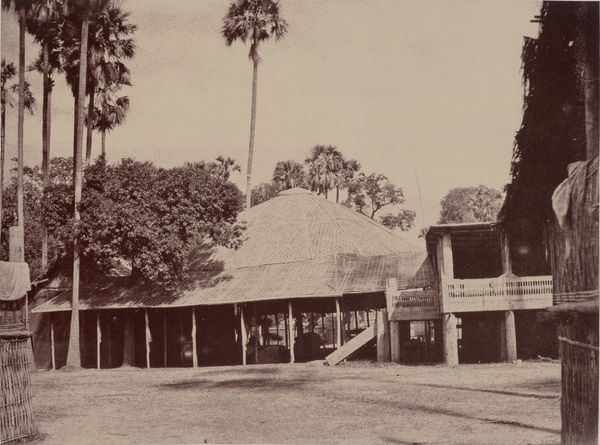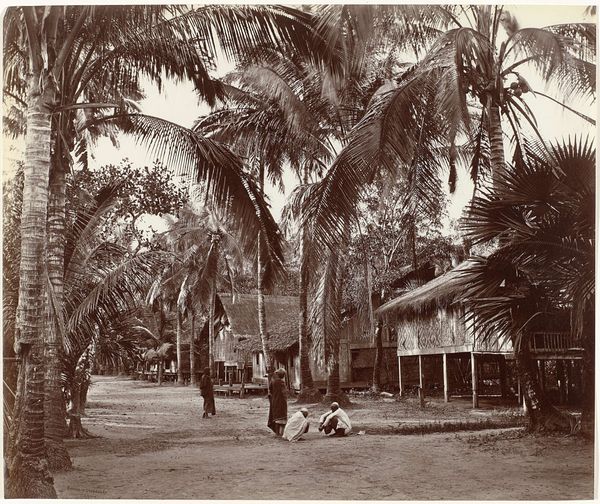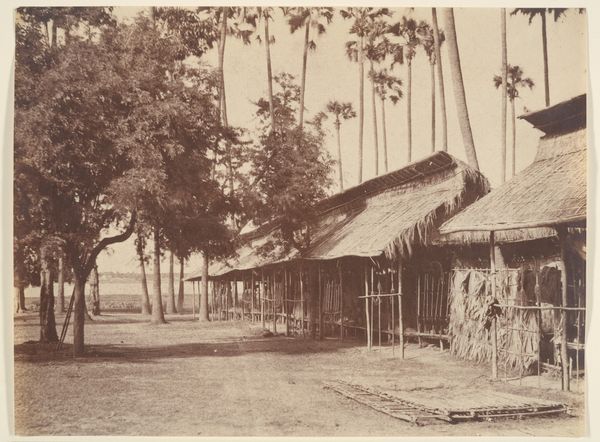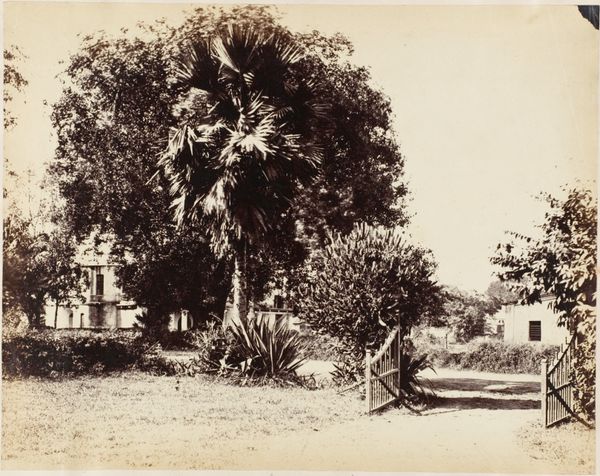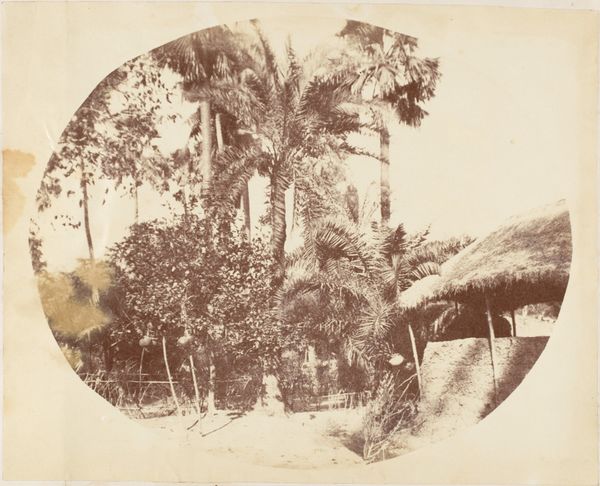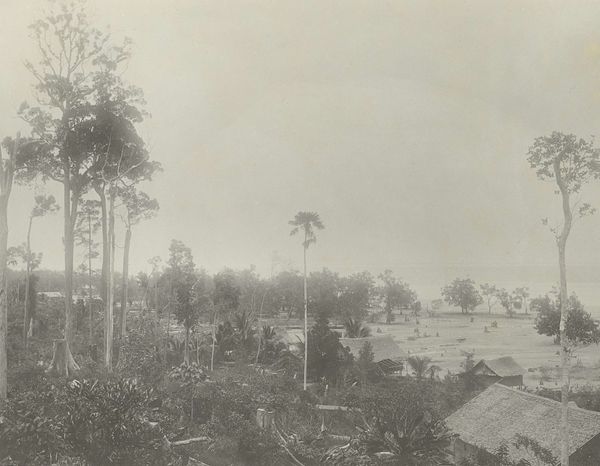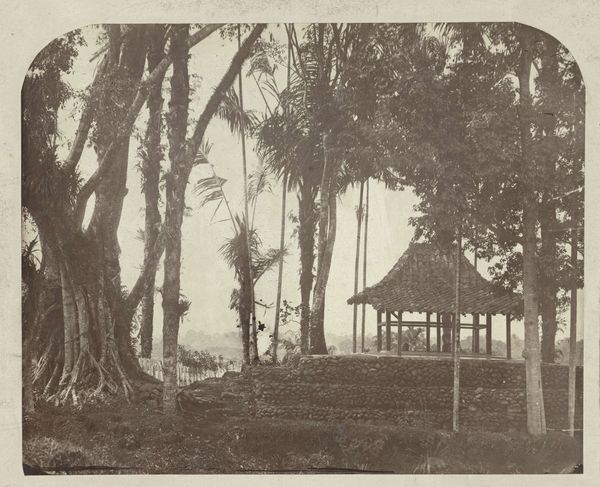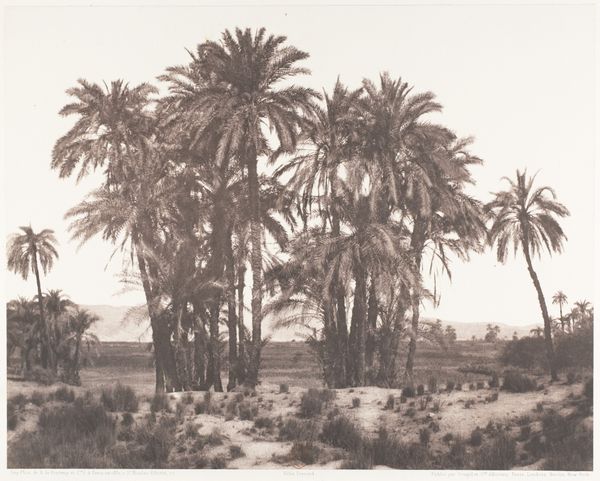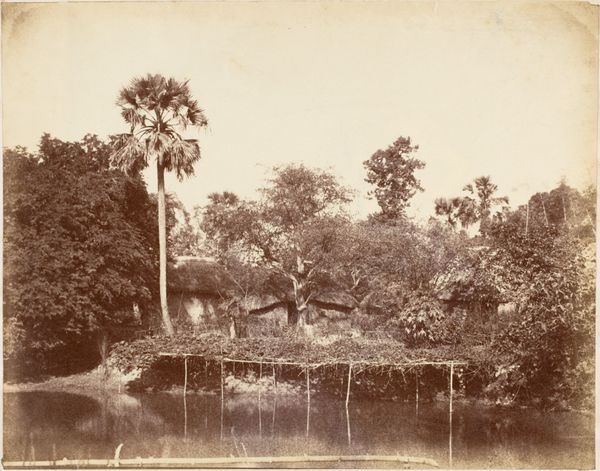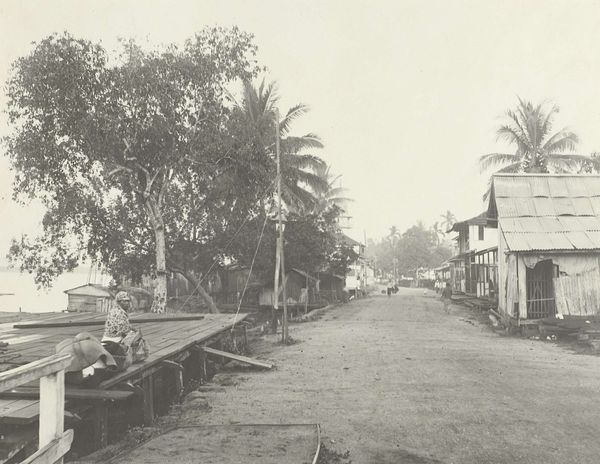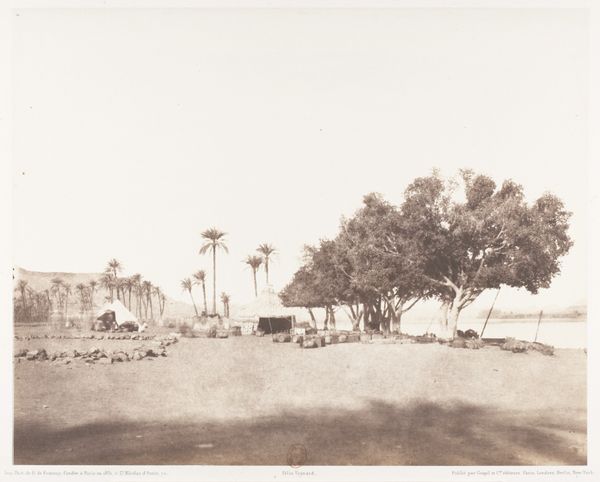
photography, site-specific, albumen-print, architecture
#
asian-art
#
landscape
#
outdoor photograph
#
photography
#
historical photography
#
site-specific
#
19th century
#
albumen-print
#
architecture
Dimensions: image: 25.4 × 33.5 cm (10 × 13 3/16 in.) mount: 45.5 × 58.3 cm (17 15/16 × 22 15/16 in.)
Copyright: National Gallery of Art: CC0 1.0
Curator: Let’s look at Linnaeus Tripe's albumen print, "Amerapoora: West Gate of the Residency Enclosure," circa 1855. What are your initial thoughts? Editor: It’s quite striking! The composition is really dominated by those towering trees. I'm curious, though, about the choice of albumen print for this subject matter. What can that tell us? Curator: The albumen process itself, involving coating paper with egg whites, sensitizing it with silver nitrate, and then printing from a negative, speaks volumes. Consider the labour involved. These prints were incredibly time-consuming and required significant resources, reflecting the photographer’s investment in capturing this colonial scene. The albumen print also afforded incredible detail, allowing the viewer a chance to intimately engage with the materiality of place. Notice, for instance, the visible textures of the thatching material used for the houses. What social conditions do you think facilitated Tripe's project in Burma? Editor: I hadn’t thought of that. So, it's not just about the image itself, but the means of producing it. Given the title and the era, I imagine British colonial power played a huge part. Was photography itself a tool of colonialism here, then? Curator: Precisely. Think about how photography documented and classified the colonized world, often reinforcing hierarchies. Tripe, commissioned by the British East India Company, contributed to a visual archive that served imperial interests. His camera helped quantify the very stuff upon which the English empire could build itself. The print is an object testifying to this cultural exchange, if we can even call it that. Is this just a "landscape", then? Editor: No, definitely not just a landscape. It feels more like a record of colonial enterprise. I guess focusing on the process really changes how we understand the image. Curator: It does indeed. By interrogating the materials and context, we uncover layers of meaning beyond the picturesque facade. What else strikes you? Editor: I think I see that it pushes me to think about art as physical things and what power imbalances they can uncover. Thanks!
Comments
No comments
Be the first to comment and join the conversation on the ultimate creative platform.
